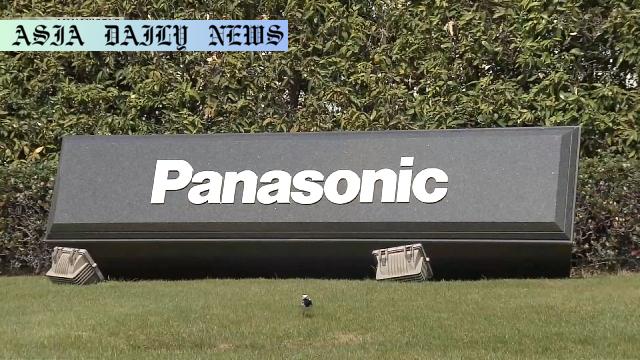Panasonic plans to cut 10,000 jobs globally as part of a major restructuring effort to enhance efficiency and profitability.

Panasonic’s Global Workforce Restructuring
Japanese electronics corporation Panasonic Holdings has revealed a drastic measure aimed at reshaping its operational structure. The company plans to reduce its global workforce by 10,000 employees, accounting for roughly 5% of its workforce. This decision comes as the firm grapples with the need to address underperforming facets of the business. Officials disclosed that half of the job cuts will occur domestically in Japan and the other half overseas, with affected sectors largely being sales and administrative divisions. Employees will likely be offered early retirement packages as part of the transition.
CEO Kusumi Yuki described the workforce restructuring as an essential step towards creating a more “lean, efficient, and resilient” organization capable of adapting to rapidly changing market dynamics. The reorganization aligns with the company’s vision to sharpen its focus on artificial intelligence (AI)-based services targeted towards corporate clients. This strategic pivot underscores a shifting attitude within Panasonic towards innovation-driven growth.
A New Era of Strategic Focus in AI
Panasonic is channeling its efforts into transformative technologies, shedding weaker business units to redirect resources toward high-growth areas such as AI services. The firm is actively considering the sale of its TV business, a once-dominant sector that has declined in market competitiveness. Additionally, the home appliance, air conditioning, and lighting unit might face a breakup, illustrating the scale of Panasonic’s overhaul. Such measures signal an end to a traditional reliance on legacy products while marking a fresh chapter of repositioning towards modern enterprise services.
AI plays a pivotal role in Panasonic’s evolving business model, reflecting wider industry trends where intelligent solutions are becoming central to operations. CEO Kusumi has explicitly stated his ambition to secure a profit improvement exceeding $1 billion by the fiscal year 2026. Accomplishing this feat would ensure Panasonic stays aligned with its competitors while providing a strong base for sustainable growth in an unpredictable economic landscape.
Financial Repercussions and Leadership Responsibility
Panasonic has adjusted its financial forecast for the current fiscal year, anticipating a 7% drop in sales to about $53.7 billion, paired with a steep 15% decline in net profits to $2.1 billion. The forecast did not account for potential impacts of U.S. tariffs, which could exacerbate financial pressures. While these forecasts point towards impending challenges, the company hopes its strategies to cut costs and allocate resources more effectively will help mitigate losses.
CEO Kusumi Yuki is also taking a personal step in sharing the burden of these changes, pledging to reduce his own annual compensation by approximately 40% during the fiscal period. This symbolic gesture not only underscores his commitment to the company’s transformation but also demonstrates a leadership quality aimed at inspiring trust and unity among stakeholders during challenging times.
Understanding the Broader Impact
While the job cuts and reorganization strategy may initially unsettle stakeholders and employees, the moves reflect Panasonic’s commitment to long-term sustainability. By focusing on emerging technologies and shedding underperforming divisions, Panasonic is setting a course to thrive in an increasingly digitized, innovative economy. However, the broader implications for employees, particularly those facing redundancy, must not be overlooked.
In conclusion, Panasonic’s bold restructuring marks a significant shift not just for the company, but also for the consumer electronics sector. While challenges lie ahead in terms of earnings, employee morale, and navigating geopolitical uncertainties like tariffs, the initiatives underscore an ambition to evolve and maintain relevance. If successful, this transformation could place Panasonic at the forefront of next-generation corporate technology service providers while solidifying its position as a lean, efficient, and profit-driven giant.
Commentary
Panasonic’s Transformation: A Thoughtful Analysis
Panasonic’s decision to cut 10,000 jobs globally serves as a stark reflection of the fast-evolving corporate landscape within the electronics sector. This move is indicative not just of the company’s own challenges but of a broader trend among legacy corporations transitioning to newer, tech-driven business models. It is heartening to see Panasonic acknowledge its underperforming divisions and undertake decisive action rather than perpetuate inefficiencies. However, such bold measures inevitably carry significant social and economic implications.
Balancing Cost-Cutting and Innovation
The company’s pivot towards AI-led services is a promising development that positions it well for the future. AI technologies are increasingly becoming a cornerstone for enterprise clients, offering solutions that streamline business processes, enhance productivity, and drive digital transformation. Panasonic’s entry into this landscape could carve out new revenue streams and put the company in a stronger competitive position. Nevertheless, this strategic shift highlights the imperative of simultaneously addressing the human toll linked to job reductions.
Leadership and Accountability in Hardship
CEO Kusumi Yuki’s decision to take a substantial pay cut is a notable example of leadership during adversity. His willingness to shoulder financial responsibility demonstrates an understanding of the moral stakes at play. Such gestures reinforce trust among employees and investors alike, fostering confidence that the company’s leaders are not disconnected from the realities of restructuring.
Overall, Panasonic’s transition is both a cautionary tale and an optimistic signal. It reflects the necessity of adaptability in a world driven by rapid technological progress while showcasing the harsh realities of significant structural change. Stakeholders will be watching closely to see how effectively Panasonic navigates this ambitious transformation, balancing innovation, profit growth, and social responsibility. Their success or failure could set a precedent for other major corporations facing similar crossroads.


